
This task requires students to computer currency exchanges.
- Subject:
- Mathematics
- Material Type:
- Activity/Lab
- Provider:
- Illustrative Mathematics
- Provider Set:
- Illustrative Mathematics
- Author:
- Illustrative Mathematics
- Date Added:
- 05/01/2012

This task requires students to computer currency exchanges.
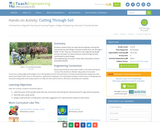
Students pretend they are agricultural engineers during the colonial period and design a miniature plow that cuts through a "field" of soil. They are introduced to the engineering design process and learn of several famous historical figures who contributed to plow design.

The growing of rapid cycling Brassica rapa, Rbr, through a life cycle from seed to seed can provide the basis for learning many aspects of biology that are relevant to the studentsĺŐ understanding of themselves as individual organisms among themany others inhabiting the Earth.
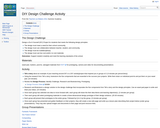
This wiki page describes the DIY Design Challenge Activity used during ISKME's Teacher Academy. Design a DIY Project for students that meets the following design principles:The design must meet a need for their school community. The design must use collaboration between teacher, student, and community. The design must be multidisciplinary. The design must use low cost and/or no cost materials. Group examples are included.

This task requires students to work with unit rates.
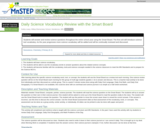
An elementary review activity for chemistry vocabulary, tools, and concepts used with the classroom science curriculum.
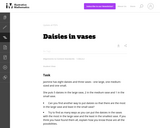
This word problem requires students to find multiple solutions.

Students must convert yards to feet to solve this word problem.
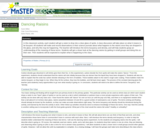
This activity is an entire-class lab experiment that refreshes the concepts of sinking and floating, while introducing the concepts of bouyancy and density using the fizz from sprite (carbon dioxide gas) and raisins.
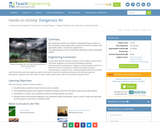
By tracing the movement of radiation released during an accident at the Chernobyl nuclear power plant, students see how air pollution, like particulate matter, can become a global issue.
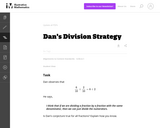
The purpose of this task is to help students explore the meaning of fraction division and to connect it to what they know about whole-number division.
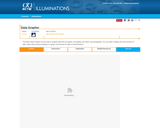
Students use this interactive tool to explore the connections between data sets and their representations in charts and graphs. Enter data in a table (1 to 6 columns, unlimited rows), and preview or print bar graphs, line graphs, pie charts, and pictographs. Students can select which set(s) of data to display in each graph, and compare the effects of different representations of the same data. Instructions and exploration questions are provided using the expandable "+" signs above the tool.

This task asks the students to solve a real-world problem involving unit rates (data per unit time) using units that many teens and pre-teens have heard of but may not know the definition for. While the computations involved are not particularly complex, the units will be abstract for many students.
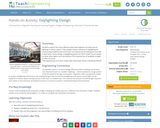
Students explore the many different ways that engineers provide natural lighting to interior spaces. They analyze various methods of daylighting by constructing model houses from foam core board and simulating the sun with a desk lamp. Teams design a daylighting system for their model houses based on their observations and calculations of the optimal use of available sunlight to their structure.
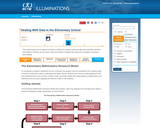
This project-based unit on statistics provides an opportunity for problem solving through real-world data collection and analysis. Students follow the seven- step "Elementary Mathematics Research Model" by identifying a research question, predicting the answer, and conducting research to test their hypothesis. Students use the mean, mode and median to analyze their data and use graphs to represent their findings so they can draw and justify conclusions. The lesson plan includes examples, questions for students, and possible assessment and extension ideas.

Dr. Bettina Love, professor at University of Georgia, writes about how it isn't enough to "love all students." This article is in Ed Week, published on March 18, 2019.

Spreadsheets Across the Curriculum/Geology of National Parks module. Students calculate the haze index and standard visual range from concentrations of particulate matter.

Okta challenges you to a duel! That crazy octopus wants to play you in a game where the first person to choose cards with a specified sum wins. You can choose how many cards, what types of numbers, and Okta's level of strategy.

This lesson plan introduces the game Deep Sea Duel, which develops students' operation skills and strategic thinking, and can be played online or with cards. After playing several variations of the game, students attempt to identify a winning strategy and compare the game to other familiar games. Variations include whole numbers, decimals, fractions, exponents, and words. The lesson includes printable cards and a student worksheet, questions for student discussion and teacher reflection, assessment options, and extensions. The online game and the cited article are cataloged separately.
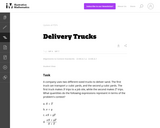
The primary purpose of this task is to illustrate certain aspects of the mathematics described in the A.SSE.1. The task has students look for structure in algebraic expressions related to a context, and asks them to relate that structure to the context. In particular, it is worth emphasizing that the task requires no algebraic manipulation from the students.